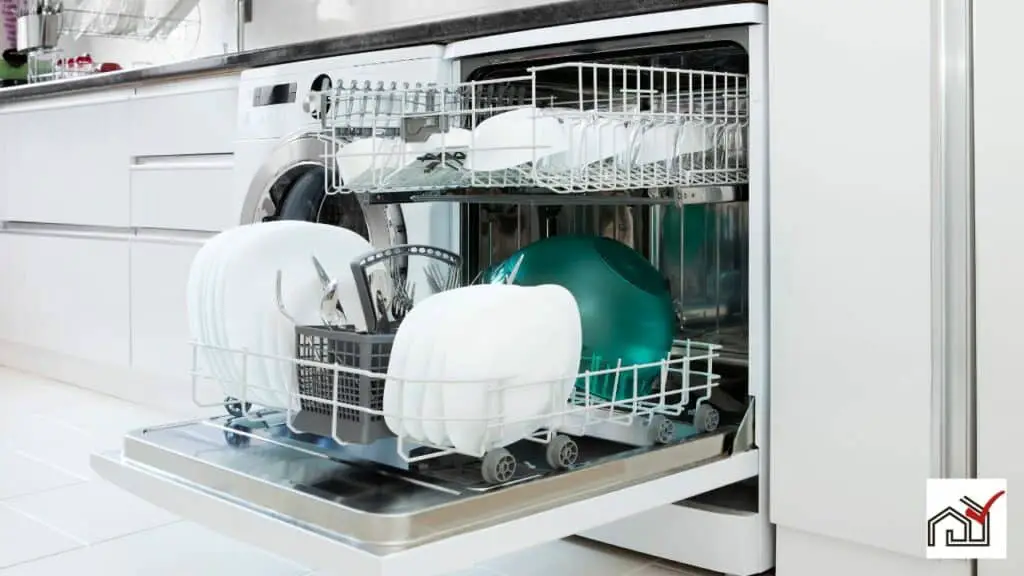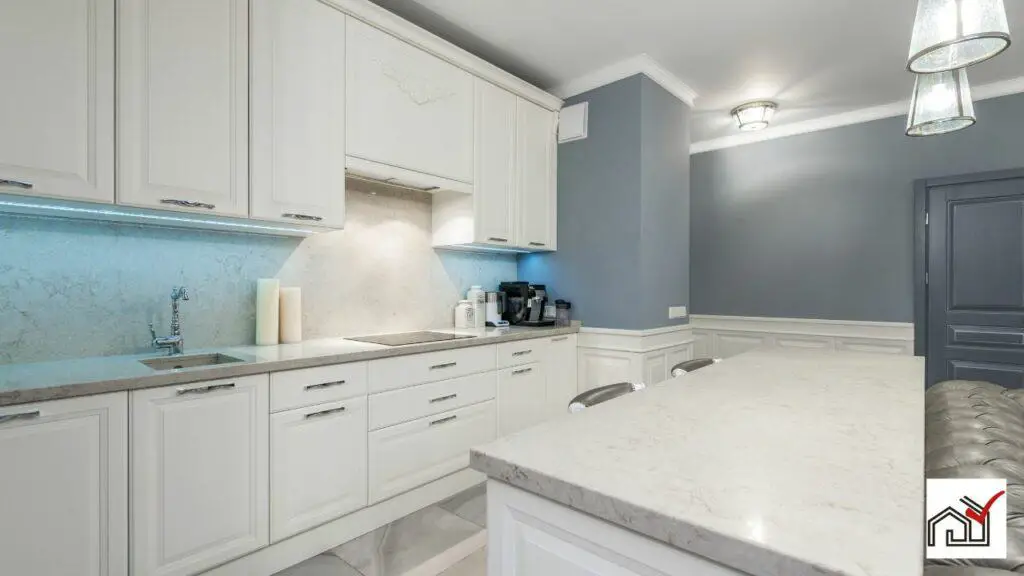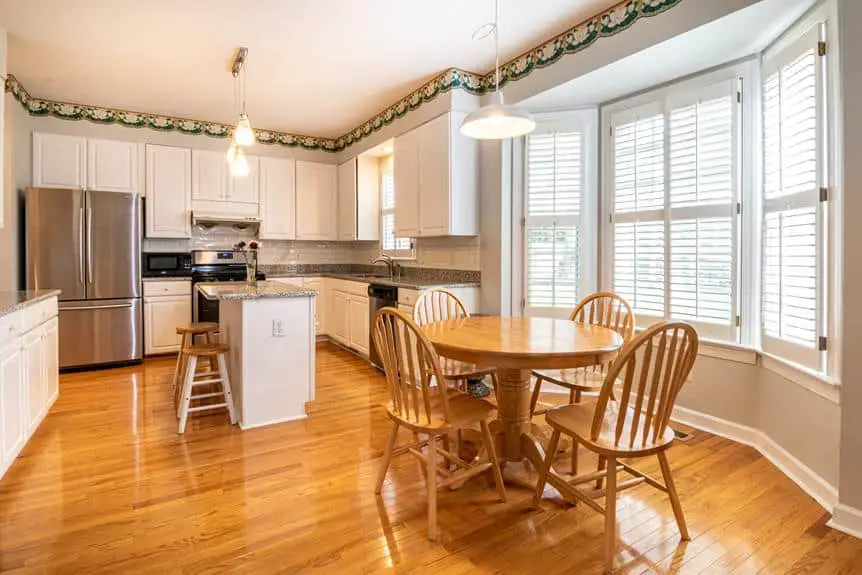To cover a gap above a dishwasher, first measure the gap's size.
Then, choose a solution such as adjusting the dishwasher height, using filler strips, or creating a custom panel.
Ensure accurate measurements and precise cuts for installation.
These steps help improve the kitchen's look and cleanliness.
Assessing the Gap Size
To cover the gap above a dishwasher, measure the space accurately using a measuring tape to determine the width and height.
For gaps of 1/2-3/4 inch, adjust the dishwasher's legs to align with the countertop, ensuring adequate ventilation.
For larger gaps, install a filler strip or custom gap cover matching the kitchen design, without hindering countertop protection from heat and moisture.
Accurate measurements are essential for selecting an effective and visually pleasing solution that preserves dishwasher function and kitchen aesthetics.
Raising the Dishwasher
Adjusting the dishwasher's height can close the gap between the appliance and the countertop. Most dishwashers have adjustable feet that can be twisted to raise or lower the dishwasher. To raise the dishwasher, remove the bottom panel to access the feet. Turn the feet clockwise to increase the height.
If the feet don't extend enough, you can use two wooden planks. Cut the planks to the necessary thickness, sand the edges, and place them under the dishwasher to reach the desired height.
Make sure the dishwasher aligns with the countertop for a seamless look. Avoid raising it too much, which could hinder the door's function or the dishwasher's performance.
Once raised, if there's still a gap, use wood or a similar material to fill it. This ensures the dishwasher fits neatly and looks integrated with the kitchen.
Installing Filler Strips
Installing filler strips is a practical method to cover gaps above a dishwasher that cannot be eliminated by adjusting its height. These strips can be wood or other materials that blend with the kitchen cabinetry. To create a seamless appearance, cut a wooden strip to the gap's exact dimensions.
Ensure precise measurement for a tight fit without protruding edges. Secure the strips properly during installation. For adjustable strips, tweak the position to achieve an optimal fit. Silicone gap covers are an alternative; they're easy to maintain and can adjust to gap size variations.
To install a wooden strip, use appropriate adhesives or brackets to attach it to the countertop or dishwasher. Verify that the strip doesn't obstruct the dishwasher door or control access.
Filler strips are a functional and attractive option to integrate a dishwasher into the kitchen's design by bridging the countertop gap.
Crafting a Custom Panel
Creating a custom panel can improve the look of a kitchen by covering the space above a dishwasher. To start, measure the gap to determine the panel size. Cut a piece of wood to these dimensions, ensuring it fits over the gap and aligns with the dishwasher's height.
Install wooden supports under the countertop on both sides of the dishwasher to secure the panel. Use additional wood shims to fill any remaining gaps for a built-in look and consider adding a matching toe kick at the dishwasher's base for cohesion.
Lastly, apply adhesive foam tape around the panel's edges for a stable and finished appearance. With careful measurement and fitting, a custom panel can effectively conceal the gap above a dishwasher.
Securing and Finishing Touches
After measuring and covering the gap above the dishwasher, it's important to secure the appliance and apply finishing touches for stability and appearance. Ensuring proper securing and finishing can also prevent heat buildup.
Adjust the dishwasher's legs to minimize the gap and improve ventilation, which helps avoid heat and moisture damage. To fill the space, use wood shims or a constructed frame from spare wood, then paint or stain these to match the cabinetry for a uniform look.
Install dishwasher filler strips or silicone counter gap covers to hide any discrepancies and protect against moisture. For remaining gaps, apply adhesive foam tape or silicone caulk for a tight seal, especially near electrical or plumbing connections. Use a metal plate if the gap is next to a heat source for a heat-resistant barrier.
These steps not only improve the kitchen's look but also prolong the lifespan and functionality of the appliances. Attention to detail will result in a professional finish suitable for a high-use kitchen.




